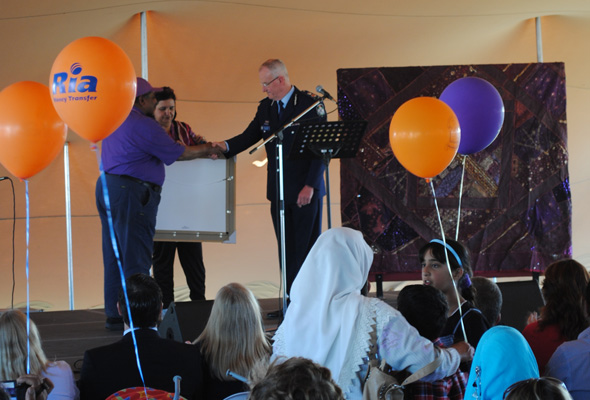Brisbane a model for Muslim integration
Queensland's Muslim leaders and police agree that close cooperation has created a successful model for integration.

Queensland Police Commissioner Bob Atkinson receives a gift from Muslim community leaders
Despite being widely regarded as Australia’s most conservative state, Queensland is a model for Muslim integration into Australian society. But why?
More than 20,000 Muslims live in Brisbane. Geographically, they are concentrated on the south side of the city, where there are eight mosques and three Muslim schools.
While this is only around 10 per cent of the overall Muslim population in Australia, there has still been remarkably little tension between them and the wider community.
According to Jim Bellos, a Queensland Police Sergeant who has worked as a Cross Cultural Liaison Officer for seven years, this is because of close work ties between the Queensland Police Force and the Muslim community.
“What happens is we have a commissioner [Bob Atkinson] who comes to events like this [Eid Fest], he supports the work of the liaison officers, the officers, their job is to work with all the communities. So what we do is on a Monday morning we ring up the community leaders to see what’s happening and if there is any issues that we need. If there’s issues, we address them before they escalate. So that’s our work and that’s why it’s working so well here.”
He also said that working with the children was a big part of the job.
“I’m an adopt-a-cop at three schools. You see little children wearing the hijabs, come up to you and grab hold of you. That’s very unusual for the parent to see them grabbing a policeman, because a lot of them come from places where the police force has not been such a very good police to them. It’s a major issue but I think it’s an important one.”
These comments are also echoed by Mohammed Yusuf, the president of the Islamic Council of Queensland.
“Yes, I think Queensland is a better model [of integration]. Under the leadership of Bob Atkinson … he worked closely to with Muslim community … most of the trouble Muslim people [from abroad] have integrating into Australian life in Brisbane is from the high cost of living.”
He also congratulated the attitude of Queenslanders: “…all people in Queensland are a close nit group, we are generally more inclusive and more tolerant of others.”
But perhaps for the best indicator of the strength of community integration in Brisbane we need look no further than this: “Today Tonight came looking for problems [for a story] … they found none,” says Jim Bellos.
